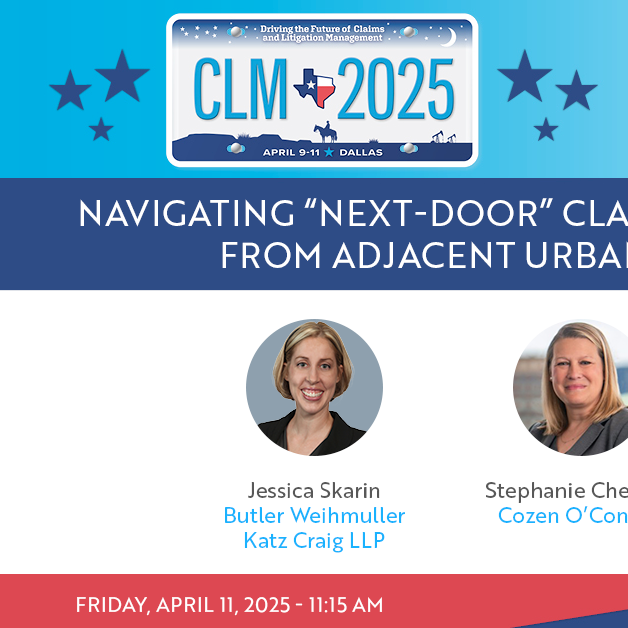
New Florida Law Changes Procedure For Making Claims Against Contractors For Construction Defects
February 1, 2004
This article was originally published in NASP Subrogator Magazine, February 2004, p. 68. © Copyright Butler 2004.
Florida Governor Jeb Bush approved Senate Bill No. 1286 (“Bill 1286”), which drastically changes the method for presenting a claim for construction defects. Effective May 27, 2003, Florida homeowners and their subrogees cannot file a construction defect lawsuit without fully complying with new pre-suit requirements.
In Section 1 of Bill 1286, the Florida Legislature states the intent of the new law.
The Legislature finds that an effective alternative resolution mechanism in certain construction defect matters should involve the claimant filing a notice of claim with the contractor, subcontractor, supplier or design professional that the claimant asserts is responsible for the defect, and should provide the contractor, subcontractor, supplier, or design professional with an opportunity to resolve the claim without resort to further legal proceedings.
Bill 1286 applies to claims against “contractors,” which the new law defines as anyone involved in “the business of designing, developing, constructing, manufacturing, selling, or remodeling dwellings or attachments thereto.” This definition includes nearly every possible defendant in a construction defect case – from the original contractor involved in the construction of the building or home, to the real estate agent or the seller of the building or home. A claimant is defined as “a homeowner, including a subsequent purchaser, tenant, or association, who asserts a claim against a contractor, subcontractor, supplier, or design professional concerning a construction defect.”
Based on the foregoing definitions, Bill 1286 will apply to virtually all subrogation claims made for construction defects to homes and condominiums. A construction defect is also defined broadly by the new law as:
[A] deficiency in, or a deficiency arising out of, the design, specifications, surveying, planning, supervision, observation of construction, or construction or remodeling of a dwelling resulting from:
- Defective material, products, or components used in the construction or remodeling;
- A violation of the applicable codes in effect at the time of construction or remodeling;
- A failure of the design of the dwelling to meet the applicable professional standards of care at the time of governmental approval;
- A failure to construct or remodel a dwelling in accordance with accepted trade standards for good and workmanlike construction at the time of construction.
When pursuing a construction defect claim, stringent pre-suit requirements must be adhered to in full, or the claimant may waive the claim. The new law provides that:
(1) In actions brought against a contractor, subcontractor, supplier, or design professional related to an alleged construction defect, the claimant shall, no later than 60 days before filing an action, serve written notice of claim on the contractor, subcontractor, supplier, or design professional, as applicable. The notice of claim must describe the claim in reasonable detail sufficient to determine the general nature of each alleged defect and a description of the damage or loss resulting from the defect, if known. The claimant shall endeavor to serve the notice of claim within 15 days after discovery of an alleged defect, but the failure to serve notice of claim within 15 days does not bar the filing of an action . . .
Under the new law, it is extremely important to notify all potential tortfeasors immediately upon discovery of a defect. After receipt of this Notice of Claim, Bill 1286 gives the contractor the right to inspect the dwelling, and the contractor must also notify his own subcontractors, as stated below:
(2) Within 5 business days after service of the notice of claim, the contractor, subcontractor, supplier, or design professional may inspect the dwelling to assess each alleged construction defect.
(3) Within 10 days, the contractor . . . must forward a copy of the notice of claim to each subcontractor . . . who it reasonably believes is responsible for each defect specified in the notice of claim.
Reasonable access to the dwelling must be provided to the contractors. Destructive testing can be performed by the contractors so long as the claimant is informed of the type of testing to be performed. If destructive testing is to be performed, it should be documented to the greatest extent possible to protect the claimant’s interests.
After receiving the Notice of Claim, the contractors have 25 days to serve a written response on the claimant. This written response must provide one of the following:
- A written offer to remedy the alleged construction defect at no cost to the claimant, including a report of the scope of the inspection, the findings and results of the inspection, a detailed description of the repairs necessary to remedy the defect, and a timetable for the completion of such repairs;
- A written offer to compromise and settle the claim by monetary payment to be paid within 30 days after the claimant’s acceptance of the offer; or
- A written statement that the contractor . . . disputes the claim and will not remedy the defect or compromise and settle the claim.
If the contractors state that they will not remedy the defect or compromise and settle the claim, the claimant can proceed with filing a lawsuit.
Bill 1286 also makes it critical for the claimant to reject, within 15 days, an inadequate settlement offer with a written response that specifically states that the offer is rejected. Otherwise, the offer to settle is deemed accepted by the claimant. Also, “the claimant’s rejection (letter) must contain the settlement offer with the word ‘rejected’ printed on it.” In other words, if the contractor’s offer to settle is not timely rejected with the word “rejected” printed on the written settlement offer itself, the offer is deemed accepted. It is therefore very important that subrogation adjusters and attorneys remain aware of this portion of the new law, because a low or inadequate offer to settle can mistakenly be accepted as a result of a claimant’s failure to timely respond with the appropriate language. However, after service of the rejection, the claimant can proceed with a lawsuit without further notice to the contractors.
| A SUMMARY OF THE NEW PRE-SUIT TIME LINE IS AS FOLLOWS: |
| CLAIM ARISES Date defect is discovered |
| CLAMANT’S SERVICE OF A NOTICE OF CLAIM Within 15 days of date of loss |
| CONTRACTOR’S INSPECTION OF THE PREMISES Within 5 days of receipt of Notice of Claim |
| CONTRACTOR’S WRITTEN RESPONSE TO NOTICE OF CLAIM Within 25 days of receipt of Notice of Claim |
| CLAIMANT’S WRITTEN RESPONSE TO CONTRACTOR’S OFFER TO SETTLE To reject, must do so within 15 days after receipt of offer |
It is extremely important that each section of Bill 1286 is followed by the subrogation claimant. If not, a construction defect claim can be waived, or a low settlement offer can be mistakenly “accepted.” While it is important to follow all of the requirements listed in the new law, the two most important items are complying with the initial Notice requirements (including notifying the contractor within 15 days after discovery of the defect) and rejecting an offer within 15 days of receipt of the offer with the word “rejected” written on the contractor’s responsive letter. However, the new law has many quirks and quandaries not fully discussed herein, which will also require detailed attention when pursuing construction defect claims in Florida.
No courts have yet interpreted Bill 1286, but one can only imagine that this new law will result in litigation. Until further direction is given by the courts, it is imperative that everyone involved in property subrogation claims in Florida be aware of the above requirements and specifically follow them as each claim arises.



